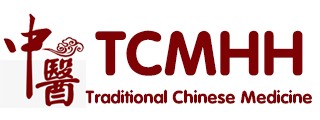NAME
PISHU
LOCATION
1.5 cun lateral to the lower border of the spinous process of the eleventh thoracic vertebra
Locate at the highest visible point of the paraspinal muscles
1.5 cun lateral to DU-6 Jizhong at the level of the lower border of the spinous process of the eleventh thoracic vertebra
NEEDLING
Oblique insertion towards the spine, 0.5 to 1 cun.
Transverse oblique insertion 1 to 1.5 cun.
Caution: perpendicular needling or oblique needling away from the spine carries a substantial risk of pneumothorax.
Straight insertion, slanted slightly toward the spine1 to 1.5 cun Sensation: local soreness, numbness and distention extending to the lumbar region
Caution: Do not needle to deeply in order to avoid puncturing the Kidneys or Liver.
Locate at the visible highest point of the paraspinal muscles.
Puncture obliquely 0.5-0.7 cun
Moxibustion is applicable
COMMAND FUNCTIONS
Back-Shu (Associated) (Transporting) point of the Spleen
ACTIONS
Tonifies Spleen Qi
Regulates the Qi of the Spleen and assists its transportive and transformative functions
Tonifies Spleen Yang
Tonifies the Spleen and Stomach
Regulates the Stomach, especially Yin
Resolves Dampness
Trasnsforms Dampness, Spleen and Stomach Damp-Heat, Damp-Phlegm and Xold-Phlegm
Warms Cold
Raises Spleen Qi
Holds the Blood
Nourishes and harmonizes the Blood
Tonifies Ying Qi and Blood
Regulates and harmonizes the Qi of the Middle Jiao
Reduces digestive Stagnation
Softens hard masses
Expedites lactation
INDICATIONS
Disention and pain of the abdomen
Focal distention
Abdominal masses
Lack of appetite
Remains thin despite much eating
Spleen Qi Cold
Undigested food in the stools
Diarrhea
Dysenteric disorder
Chronic childhood fright Wind
Childhood nutritional impairment
Drum distention
Deficiency-taxation
Jaundice (Yin-type)
Yellow body with abdominal fullness and vomiting
Pain in the lateral costal region
Gastritis
Ulcers
Nervous vomiting
Hepatitis
Anemia
Chronic hemorrhagic diseases
Weakness in the limbs
Lumps in the chest and abdomen
Tiredness
Hemafecia with dysentery
Vomiting
Epigastric pain
Backache
Atrophy disorder due to Damp-Heat
Ascites
Stomach ache or epigastric pain due to Stomach Qi Deficiency and Cold
Anxiety and palpitations due to Qi and Blood Deficiency
Constipation
Insufficient lactation due to Deficiency
Hemafecia
Hematuria
Hematemesis
Menorrhagia
Chronic hemorrhage
Uterine prolapse
Edema
Somnolence
Lassitude
Heaviness of the body with no desire to move
No desire to move the four limbs
Malarial diseases with alternating chills and fever
Lumbar pain
Pain of the shoulder and back
Skin pain
Turbid white urine
Clonic spasm
Prolapsed Stomach
Indigestion
Enteritis
Hepato-Splenomegaly
Urticaria
Constriction of the esophagus inhibiting swallowing
Loose stools
Deficiency bleeding
Dysphagia
Neurasthenia
Middle Jiao wasting and thirsting
Qi-type painful urinary dysfunction (Lin)
Pancreatitis
Borborygmus
Stomach dysfunction with insomnia
Dizziness and vertigo due to Phlegm
Cough with profuse sputum
Lymphadenitis
COMBINATIONS
| UB-28 Pangguanshu | UB-21 Weishu | SI-19 Tinggong |
| Spleen Deficiency with undigested food in the stool | Much eating but remains thin Abdominal pain with no pleasure in eating | Sadness below the Heart |
| SP-1 Yinbai UB-18 Ganshu REN-13 Shangwan | HT-1 Jiquan GB-24 Riyue | UB-18 Ganshu UB-52 Zhishi |
| Hematemesis and spontaneous external bleeding | Loss of use of the four limbs | Acute pain of both lateral costal regions |
| UB-18 Ganshu REN-13Shangwan | UB-17 Geshu M-BW-12 Yishu UB-23 Shenshu N-BW-20 Pirexue | DU-14 Dazhui ST-36 Zusanli SP-6 Sanyinjiao |
| Epistaxis with spitting of Blood | Diabetes | Leukopenia (moxa) |
| UB-23 Shenshu | ||
| Nourishes Blood |
CONTRAINDICATIONS
NOTES
This point is specifically indicated for remaining thin despite much eating. this is a very important point for nearly all chronic diseases when the person is very depleted of energy.
